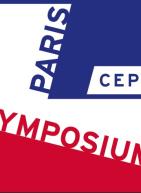DP12743 How Much Market Access? A Case study of Jordan’s Exports to the EU
The value of preferential market access schemes has fallen sharply. Drawing on a relaxation announcement of July 2016 simplifying origin requirements for access to the EU that should help restore market access, thereby alleviating the refugee crisis in Jordan, this paper argues that a simplification of origin requirements is a straightforward way to restore preferential market access. The paper compares the performance of Jordanian exports to the EU and the US under their respective FTAs. It shows that Jordanian exports to the US have grown more rapidly than exports to the EU over the last fifteen years. The study documents lower utilisation of preferences in the EU than in the US, especially in Textiles and Apparel (T&A) in spite of non-negligible preferences. Three contributing factors are identified: (i) higher adjusted preferences for apparel in the US than in the EU; (ii) greater competition from other suppliers (mostly from LDCs) in the EU market than in the US market; (iii) a simpler origin requirement in the case of the Jordan-US FTA. . Comparative evidence from the two FTAs and econometric estimates suggest that this should help restore market access for Jordanian exports to the EU. These estimates provide additional evidence that origin requirements suppress market access. Other pathways to simplify origin requirements are offered in conclusion.

